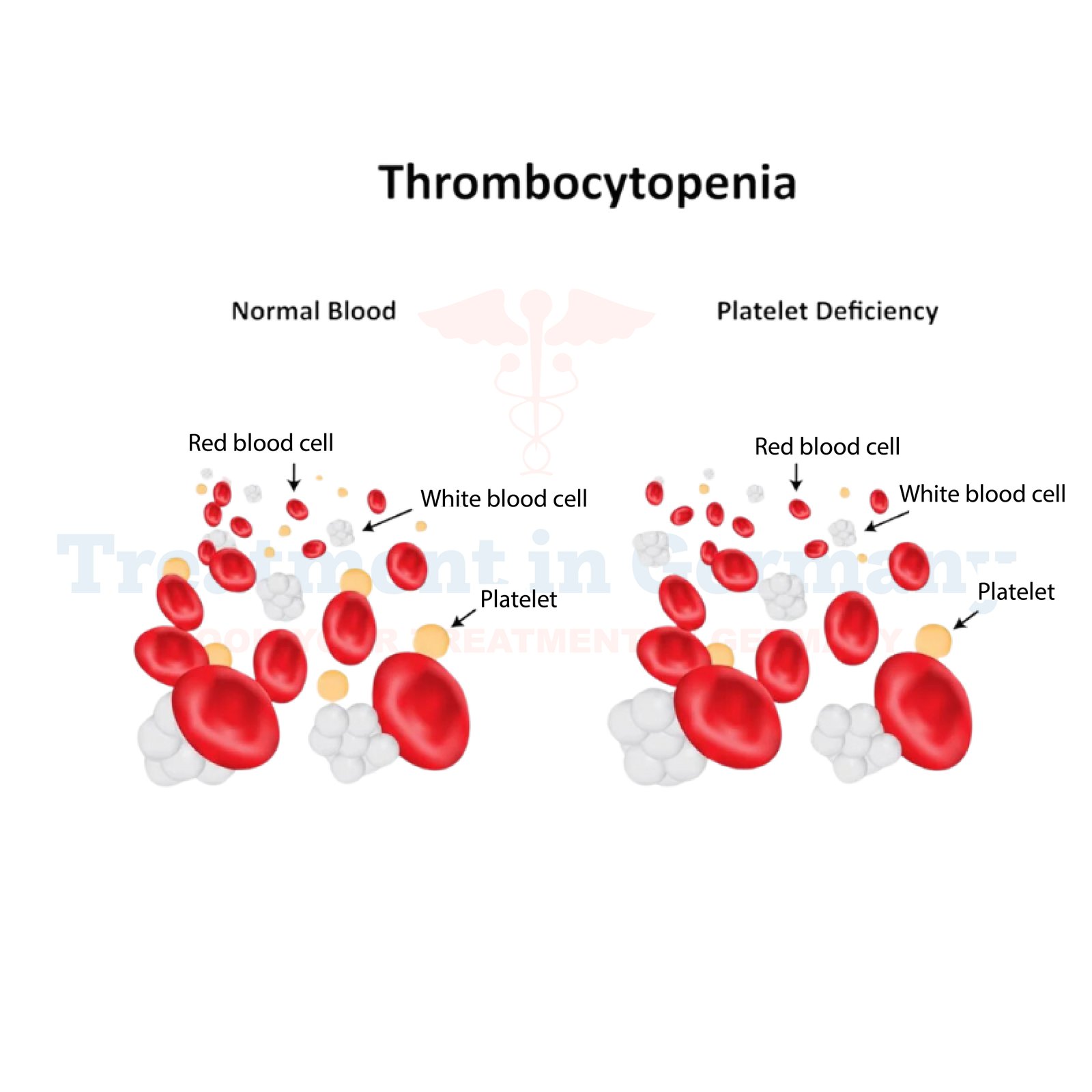What is Thrombocytopenia?
Thrombocytopenia is a medical condition characterized by a lower than normal level of platelets in the blood. Platelets are crucial for blood clotting, and a deficiency in these cells can lead to increased risk of bleeding and bruising.
Side effects of Thrombocytopenia:
Patients with thrombocytopenia may experience various side effects, including:
- Easy bruising: Due to reduced platelet count, even minor bumps or injuries can result in bruising.
- Prolonged bleeding: Small cuts or wounds may take longer to stop bleeding than usual.
- Petechiae: These are small, red or purple spots on the skin caused by bleeding under the skin.
- Excessive bleeding from the gums or nose.
- Heavy menstrual periods in women.
How is Thrombocytopenia diagnosed?
Diagnosing thrombocytopenia typically involves a combination of medical history review, physical examination, and blood tests. Your healthcare provider may ask about your symptoms, medical history, and any medications you are currently taking. A complete blood count (CBC) test will be conducted to measure your platelet count and assess the overall health of your blood.
Potential treatments of Thrombocytopenia:
The treatment approach for thrombocytopenia depends on its underlying cause and the severity of symptoms. Some potential treatment options include:
- Medications: Depending on the cause of thrombocytopenia, your doctor may prescribe medications to stimulate platelet production, suppress the immune system, or treat any underlying conditions contributing to low platelet count.
- Platelet transfusion: In cases of severe thrombocytopenia or when there's a risk of significant bleeding, platelet transfusion may be necessary to increase platelet levels quickly.
- Splenectomy: In some cases, removing the spleen (splenectomy) may be recommended, especially if the spleen is destroying platelets at a rapid rate.
- Corticosteroids: These medications may be prescribed to suppress the immune system's response, particularly in cases of immune thrombocytopenia (ITP).
- Lifestyle modifications: Making certain lifestyle changes, such as avoiding activities that may increase the risk of injury or bleeding, can help manage thrombocytopenia and reduce the likelihood of complications.
👉 Contact us for further information and receive acomplimentary consultation.

.webp)
.webp)
 (1).webp)
 (1).webp)

.webp)
.webp)
 (1).webp)
 (1).webp)
